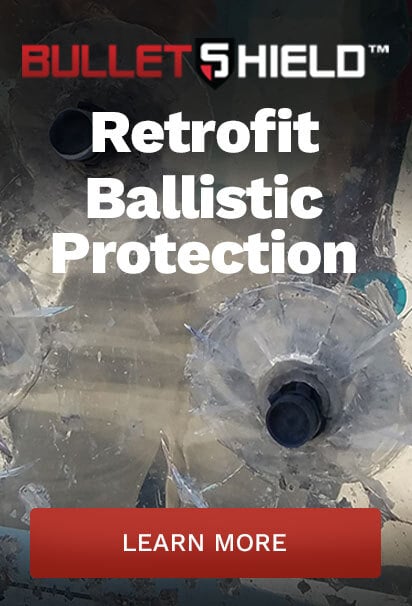Why Every Bank Needs Bullet-Resistant Transaction Windows

- The Escalating Threat of Bank Robberies and Violence
- Key statistics underscore the risks
- Understanding Bullet-Resistant Transaction Windows
- Key design elements include
- How Bullet-Resistant Windows Deter Robbery Risks
- Visible deterrence
- Physical protection
- Operational continuity
- Enhancing Safety for Employees and Customers
- Integration with Modern Bank Robbery Security Strategies
- Integration opportunities include
- Regulatory and Legal Considerations
- Key compliance considerations
- Cost vs. Benefit: Security as a Long-Term Investment
- Direct financial benefits
- Indirect benefits
- Material Science: Why Bullet-Resistant Glass Works
- Protecting the Future of Financial Institutions
Financial institutions occupy a unique position in society: they hold valuable assets, manage sensitive information, and serve as trusted community anchors. However, their visibility and accessibility also make them primary targets for criminal activity. Despite advancements in digital fraud prevention, physical threats remain a constant concern for banks across the United States.
One of the most effective strategies for mitigating these risks is the installation of bullet-resistant transaction windows. These systems resist bullets and break-ins. They serve as a strong barrier against crime, both physically and mentally. From protecting employees to reassuring customers, while maintaining regulatory expectations, bullet-resistant transaction windows represent a critical investment in long-term safety.
An opportunity to reinforce banks’ security posture without compromising visibility, communication, or design aesthetics.
The Escalating Threat of Bank Robberies and Violence
The perception that bank robberies are a relic of the past is misleading. While modern criminals have diversified into cybercrime, physical robberies remain a prevalent and dangerous issue. According to FBI data, hundreds of reported bank robberies occur annually, many involving firearms or the threat of violence.

Key statistics underscore the risks
- Most bank robberies occur at branch offices in commercial districts.
- Nearly 90% of robberies involve the threat of physical force
- Robberies typically occur during regular business hours, placing staff and customers directly in harm’s way.
- Cash loss per incident averages thousands of dollars, not accounting for long-term reputational damage or employee trauma.
- While banks primarily implement alarm systems and surveillance cameras, these tools only monitor and alert—they cannot physically protect employees.
- View more statistics as shared by ASIS International.
Bank robberies are not always about immediate financial gain. Criminals may also aim to intimidate or harm employees, creating long-term fear within the workforce. The ripple effect of a single incident can reduce employee morale, damage community trust, and increase turnover rates.
For these reasons, banks cannot rely solely on guards or cameras. They need physical barriers, like bullet-resistant windows. These make it much harder for criminals to carry out violent attacks.
Understanding Bullet-Resistant Transaction Windows
Bullet-resistant transaction windows are specialized glazing systems designed to protect against gunfire, forced entry, and physical assaults.
Bullet-resistant glass is different from regular glass. While regular glass breaks on impact, manufacturers create bullet-resistant glass using polycarbonate, laminated layers, and advanced polymers. These materials help absorb and spread out the energy from bullets.
Key design elements include
- Multi-layered glazing: Layers of glass and polycarbonate fused together to resist shattering under high-velocity impacts
- Reinforced framing systems: Engineered to hold the glazing securely, preventing criminals from bypassing the system through physical force
- Transaction-specific features: Pass-through trays, drawers, or voice ports that allow secure, efficient customer interactions
- Retrofit compatibility: Ability to install these systems within existing bank designs without the need for major structural modifications
These windows are not simply thicker glass panels. They represent carefully engineered solutions that balance visibility, communication, and aesthetics with the highest level of security performance.
How Bullet-Resistant Transaction Windows Deter Robbery Risks
The effectiveness of bullet-resistant transaction windows lies in both deterrence and protection.
Visible deterrence
The mere presence of fortified glass serves as a warning to potential criminals. A robber faced with bullet-resistant glazing is more likely to abandon the attempt than risk drawing attention.
Physical protection
If someone makes an armed attempt, the glazing acts as a barrier. Even when fired upon, bullet-resistant glazing prevents penetration, shielding employees and customers from harm.
Operational continuity
Unlike makeshift barriers or ad-hoc security measures, these systems maintain smooth day-to-day operations. Tellers can conduct transactions, pass documents, and communicate with customers without interruption.
Equally important, bullet-resistant windows and wall panels help banks provide a smooth customer experience. They also strengthen security without being obvious.
Enhancing Safety for Employees and Customers
Banks are community touchpoints. Customers want a safe place when they enter. Employees also need to feel that their wellbeing is important.
Bullet-resistant security windows address these needs directly:
- Employee protection: Tellers and front-line staff are shielded from physical threats, reducing anxiety and increasing workplace satisfaction
- Customer security: Visitors feel reassured knowing visible safety measures are in place
- Community trust: By visibly investing in protective measures, banks demonstrate accountability and leadership in public safety
Moreover, these windows provide psychological safety. Employees who feel safe are more engaged and productive. Customers are more likely to stay with banks they see as secure.
Integration with Modern Bank Robbery Security Strategies
Bullet-resistant transaction windows are not standalone solutions. They are most effective when integrated into a comprehensive security program.
Integration opportunities include
- Surveillance systems: High-resolution cameras paired with fortified glazing create overlapping security layers
- Access control: Windows complement secure entryways and restricted access zones within the bank
- Architectural design: Security glazing can be incorporated into both new construction and retrofits, aligning with brand aesthetics
This layered approach, known as defense-in-depth, makes sure that if one defense fails, other barriers stay in place.
Regulatory and Legal Considerations
Of course, banks are held to strict standards for both financial and physical security. Failing to provide adequate protection can expose institutions to legal liability in the aftermath of an incident.
Key compliance considerations
- OSHA standards requiring employers to provide a safe workplace
- Federal and state guidelines addressing physical security for financial institutions
- Insurance requirements that may favor or even mandate certain protective measures
Bullet-resistant windows demonstrate proactive compliance with these expectations. In legal contexts, a bank that has installed advanced security systems can better demonstrate due diligence and minimize liability.
Cost vs. Benefit: Security as a Long-Term Investment
The decision to invest in bullet-resistant transaction windows often comes down to cost. While upfront expenses can be significant, the long-term benefits are compelling.
Direct financial benefits
- Reduced robbery-related losses
- Lower insurance premiums in some cases
- Avoidance of litigation and settlement costs
Indirect benefits
- Improved employee retention by creating safer workplaces
- Increased customer loyalty through visible security investments
- Strengthened institutional reputation as a trustworthy, community-focused bank
When measured against the potential fallout of a single violent robbery, the investment is modest. Security experts mostly agree that bullet-resistant glass offers one of the best returns on investment for banks.
Material Science: Why Bullet-Resistant Glass Works
Bullet-resistant glazing is an engineering achievement rooted in material science. Standard glass fractures upon impact, creating dangerous shards. Bullet-resistant systems, however, combine:
- Laminated glass layers that absorb impact energy
- Polycarbonate sheets that flex without breaking
- Adhesive interlayers that distribute force across the surface
The result is a transparent barrier that withstands multiple ballistic strikes without failing. The science behind this innovation allows banks to maintain visibility, communication, and architectural design integrity while ensuring maximum protection.
Protecting the Future of Financial Institutions
The realities of modern banking demand proactive, durable, and visible security solutions. Bullet-resistant transaction windows deliver exactly that, offering protection against violent crime while maintaining seamless customer service.
Banks that invest in these systems demonstrate leadership in safety, regulatory compliance, and community trust. In today’s world, physical and reputational risks matter a lot. Bullet-resistant glazing is essential, not just an option.
The next step for safety-focused institutions is clear: They should enhance their facilities. One way to do this is by using DefenseLite’s bullet-resistant transaction windows. This action protects employees, customers, and assets today and in the future.
Safeguard your financial institution. Request your Threat Level Assessment now.


